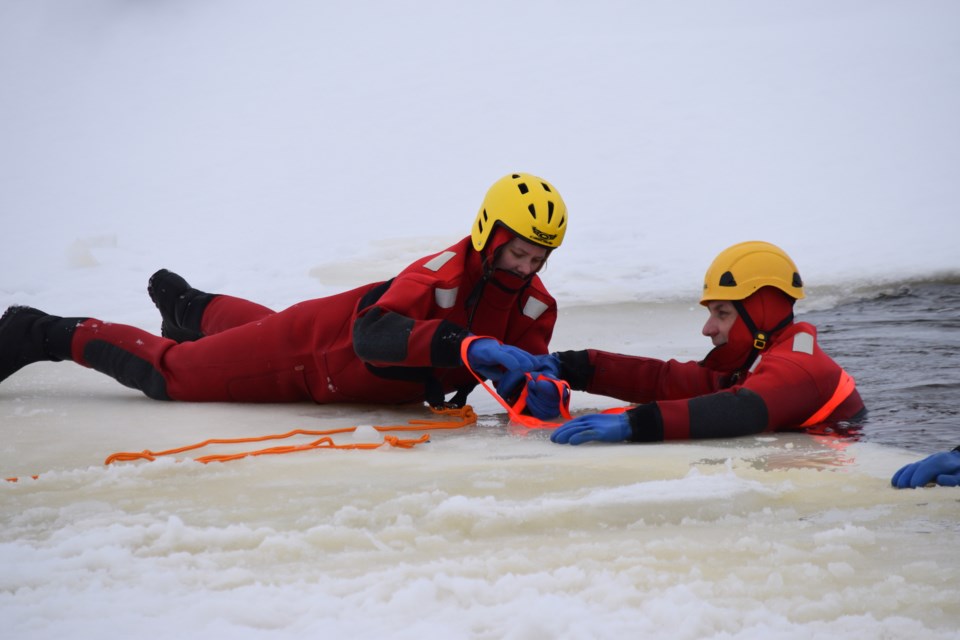BARRHEAD-Barrhead Regional Fire Services (BRFS) are a lot like the Boy Scouts in that they always try to be prepared.
And in their continuing efforts to do just that, a group of about a dozen firefighters subjected themselves to the cold water of the Barrhead reservoir on Feb. 21 to complete their two-day coldwater rescue training course.
The first day consists of in-class learning and the second day is the practical component, followed by the final test.
Deputy Chief Ted Amos said the department runs the course every two years, adding that the timing of this year's course is particularly apropos.
"Most accidents on icy lakes and rivers happen either at the beginning or end of the season when the ice conditions are at their worst," he said, noting it would not be long until warmer weather and the ice started to thin.
Amos also noted that the area has several bodies of water that are used all year round, adding this is especially true this year as more people are looking to the outdoors for recreation due to the pandemic.
In addition to the formal training through Ravenrescue, BRFS also does a lot of in-house water rescue training sessions.
The training session began with the firefighters getting accustomed to their protective flotation suits by diving into the water to simulate a self-rescue.
"When you fall in, the first thing you do, as part of the 1-10-1 rule, is to take a minute to evaluate your situation and get accustomed to the temperature," Amos said. "The cold water just sucks the air out of you. That is why you want to take a minute to try to control your breathing."
The "1-10-1" rule is a memory device to remember the first three phases of cold water immersion and the approximate time each takes.
The first phase is the shock of not only the sudden fall but the sudden change of temperature.
"The cold water just sucks the air out of you. That is why you want to take a minute to try to control your breathing," Amos explained.
After getting control of your breathing, a person has 10 minutes to attempt to self-rescue, as the cold water will cause a person to start to lose the dexterity and strength in one's extremities.
"If you haven't managed to pull yourself out by then, the best thing to do is just hold on to the ice-shelf and wait to be rescued," Amos said, noting the final 1 refers to the roughly one hour people have before hypothermia sets in. "What will hopefully happen is that your clothes will freeze to the ice securing you in place and prevent you from drowning, especially if you lose consciousness."
At the end of the course, after running through several different rescue scenarios, firefighters had the opportunity to see what it would really be like if they broke through the ice and plunged through the water without the benefit of their protective floatation suit by taking the "polar plunge" and then attempting a self-rescue.
Barry Kerton, TownandCountryToday.com



